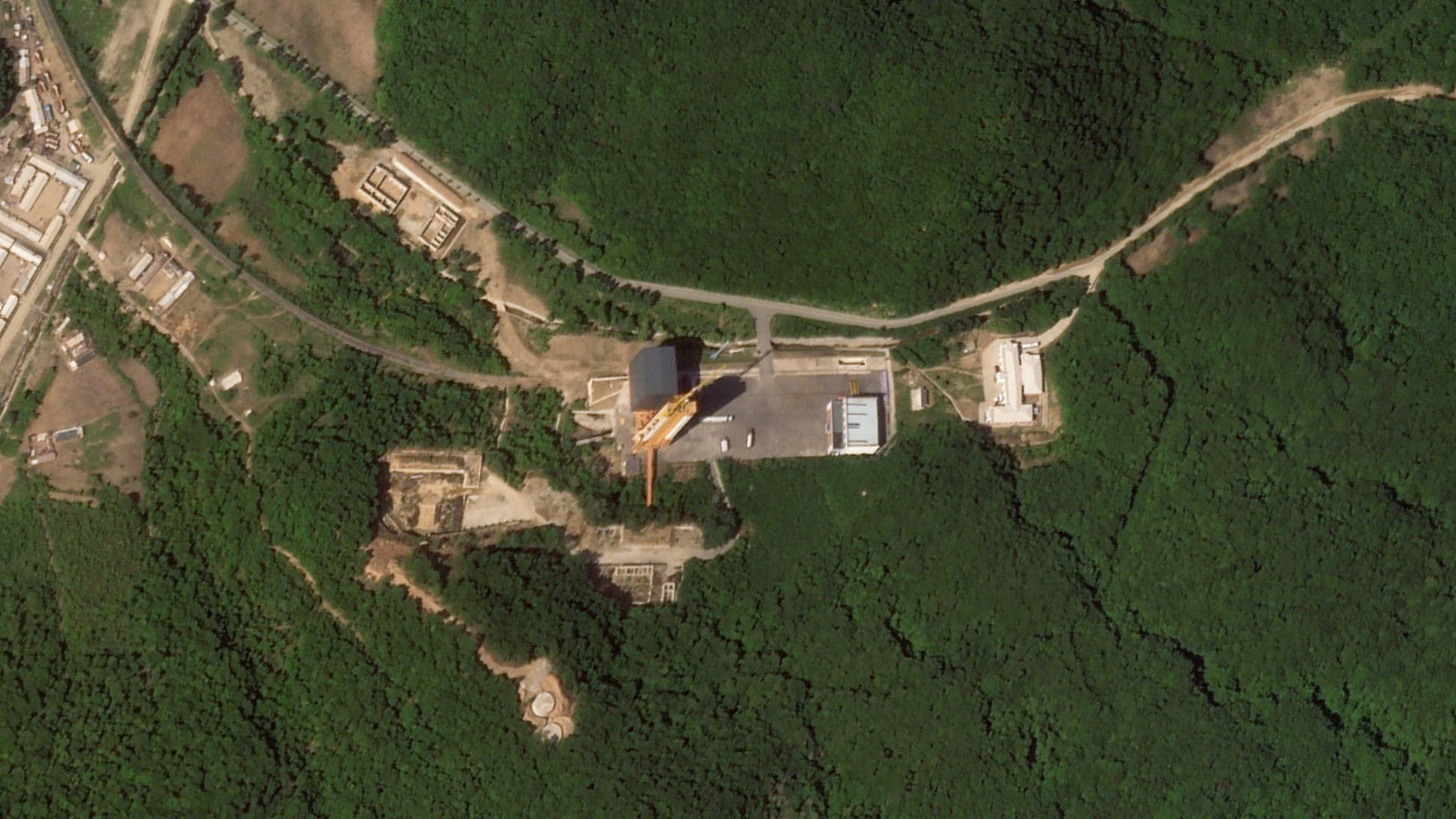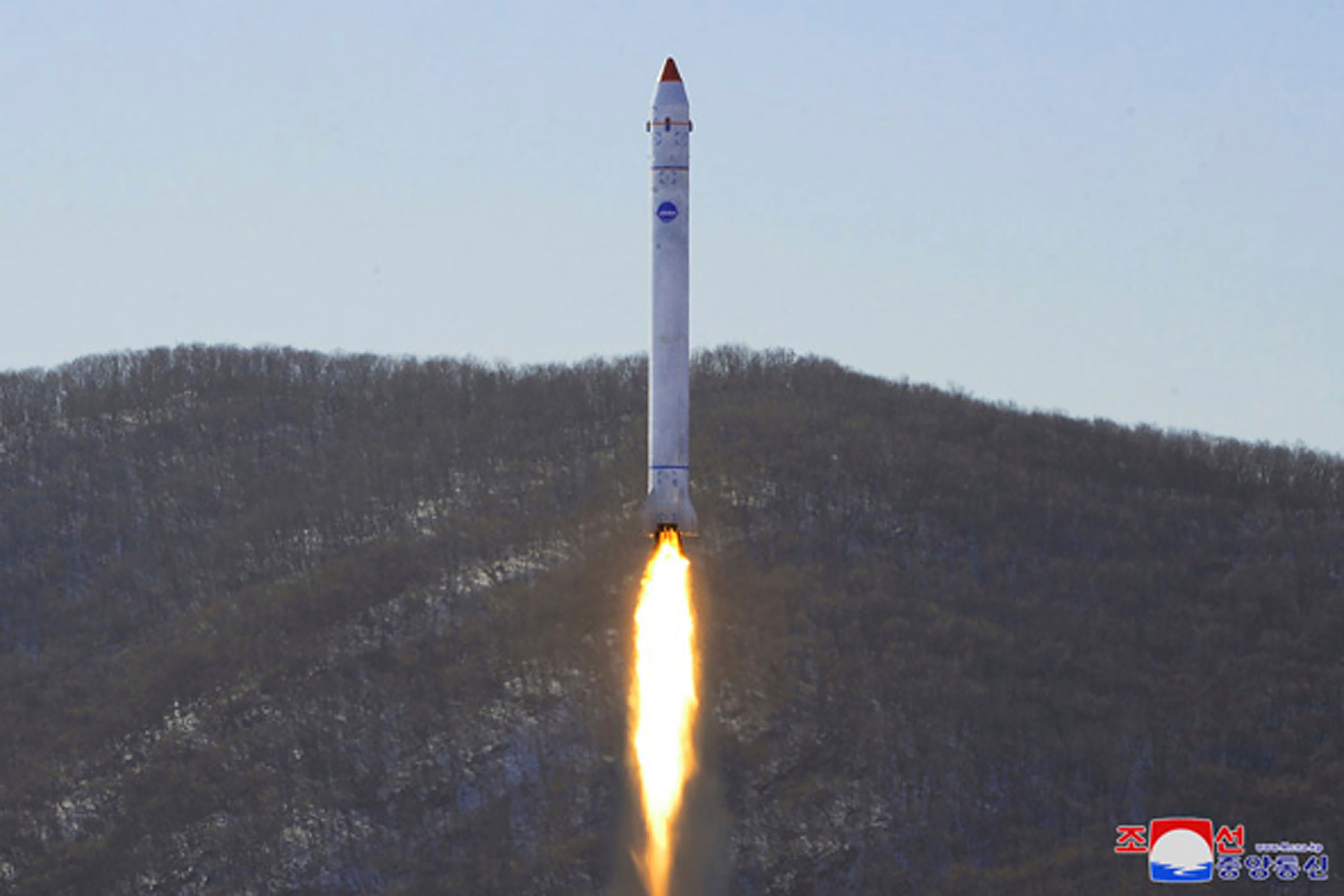SEOUL, South Korea — North Korea said its attempt to put the country’s first spy satellite into orbit failed Wednesday, an apparent embarrassment to leader Kim Jong Un over his push to boost his military capability in the protracted security tensions with the United States and South Korea.
The statement published in state media said the rocket carrying the satellite crashed into waters off the Korean Peninsula’s western coast after it lost thrust following the separation of its first and second stages. It said scientists were examining the cause of the failure.
RELATED

The rocket was launched about 6:30 a.m. from the northwestern Tongchang-ri area, where North Korea’s main space launch center is located, the South Korean Joint Chiefs of Staff said in a statement.
South Korea’s military said the rocket had “an abnormal flight” before it fell in the waters. It also said it bolstered its military readiness in close coordination with the United States. Japan’s Chief Cabinet Secretary Hirokazu Matsuno told reporters that no object was believed to have reached space.
The North Korean launch had prompted brief evacuation orders in South Korea and Japan.
The South’s capital city of Seoul issued alerts over public speakers and cellphone text messages telling residents to prepare for evacuation. But there were no reports of damages or major disruption and Seoul later lifted the alert.
The Japanese government activated a missile warning system for its Okinawa prefecture in southwestern Japan, believed to be in the path of the rocket.
“Please evacuate into buildings or underground,” the alert said. Authorities later lifted the calls for evacuation.
A top North Korean official had said Tuesday that the country needed a space-based reconnaissance system to counter escalating security threats from South Korea and the United States.
The United States strongly condemned North Korea for the launch, which used ballistic missile technology in violation of U.N. Security Council resolutions.

President Joe Biden and his national security team were assessing the situation in coordination with U.S. allies and partners, National Security Council spokesperson Adam Hodge said.
It is not clear if a North Korean spy satellite would significantly bolster its defenses. The satellite disclosed in the country’s state-run media didn’t appear to be sophisticated enough to produce high-resolution imagery. But some experts note that it is still likely capable of detecting troop movements and big targets, such as warships and warplanes.
Recent commercial satellite imagery of the North’s main rocket launch center in the northwest showed active construction activities indicating that North Korea plans to launch more than one satellite, however.
And in his statement Tuesday, Ri Pyong Chol, a close associate of leader Kim Jong Un, said the country it would be testing “various reconnaissance means.”
He said those surveillance assets are tasked with “tracking, monitoring, discriminating, controlling” and responding, both in advance and real time, to moves by the United States and its allies.
With three to five spy satellites, North Korea could build a space-based surveillance system that allows it to monitor the Korean Peninsula in near real-time, according to Lee Choon Geun, an honorary research fellow at South Korea’s Science and Technology Policy Institute.
During his visit to the country’s aerospace agency earlier this month, Kim emphasized the strategic significance a spy satellite could have in North Korea’s standoff with the United States and South Korea.
The satellite is one several high-tech weapons systems that Kim has publicly vowed to introduce in recent years. Other weapons he has pledged to develop include a multi-warhead missile, a nuclear submarine, a solid-propellant intercontinental ballistic missile and a hypersonic missile.
Denuclearization talks with the U.S. have been stalled since early 2019. In the meantime, Kim has focused on expanding his nuclear and missile arsenals in what experts say is an attempt to wrest concessions from Washington and Seoul. Since the beginning of 2022, North Korea has conducted more than 100 missile tests, many of them involving nuclear-capable weapons targeting the U.S. mainland, South Korea and Japan.
North Korea says its testing activities are self-defense measures meant to respond to expanded military drills between Washington and Seoul that it views as invasion rehearsals. U.S. and South Korean officials say their drills are defensive and they’ve bolstered them to cope with growing nuclear threats by North Korea.
The U.N. imposed economic sanctions on North Korea over its previous satellite launches, which it views as covers for testing its long-range missiles. China and Russia, permanent members of the U.N. council who are now locked in confrontations with the U.S., already blocked attempts to toughen sanctions over Pyongyang’s recent ballistic missile tests.
Before Tuesday’s launch, both South Korea and Japan said such a move would undermine regional peace. The South Korean Foreign Ministry warned that North Korea would face consequences.
After repeated failures, North Korea successfully put its first satellite into orbit in 2012, and the second one in 2016. The government said both are Earth-observation satellites launched under its peaceful space development program, but many foreign experts believed both were developed to spy on rivals.
Observers say there has been no evidence that the satellites have ever transmitted imagery back to North Korea.
Associated Press writers Kim Tong-hyung in Seoul and Mari Yamaguchi in Tokyo contributed to this report.



